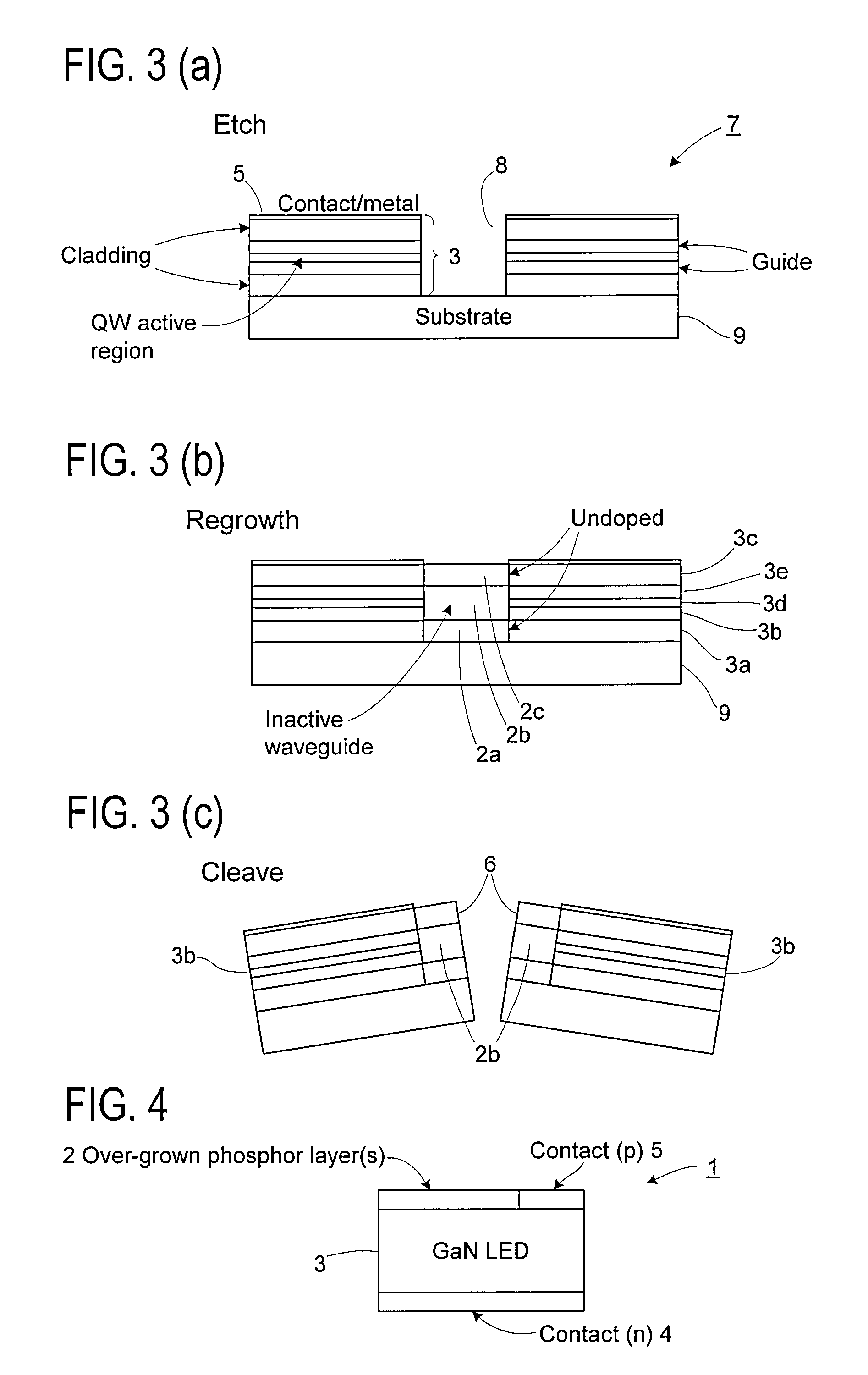Modifying the optical properties of a nitride optoelectronic device
a technology of optoelectronic devices and nitride, which is applied in the direction of lasers, semiconductor devices, semiconductor lasers, etc., can solve the problems of low deposition rate, prone to catastrophic optical damage of the cleaved facets of the semiconductor laser device, and lack of precise control of the thickness or composition of the deposited overgrowth layer, etc., to achieve novel and improved optical characteristics and performance of the device, and the thickness and composition of the or each nitrid
- Summary
- Abstract
- Description
- Claims
- Application Information
AI Technical Summary
Benefits of technology
Problems solved by technology
Method used
Image
Examples
Embodiment Construction
[0057] According to the present invention a plasma-assisted growth method, such as, for example, plasma-assisted MBE, is used to grow one or more nitride semiconductor layers over a processed semiconductor optoelectronic device, in order to modify its optical emission properties. FIG. 1(a) to FIG. 1(c) illustrate the principal stages of a method of the present invention.
[0058] The invention takes as its starting point a nitride semiconductor light-emitting device structure 1′ that has been processed in some way. The light-emitting device structure 1′ may have been grown according to any conventional semiconductor growth technique such as metal organic chemical vapour deposition (MOCVD) or molecular beam epitaxy. A processed semiconductor optoelectronic device is defined as a structure that has been converted from its “as-grown form” by one or more of: dicing, cleaving, etching, annealing, deposition, patterning, implantation or oxidation.
[0059] A processed nitride optoelectronic d...
PUM
 Login to View More
Login to View More Abstract
Description
Claims
Application Information
 Login to View More
Login to View More - R&D
- Intellectual Property
- Life Sciences
- Materials
- Tech Scout
- Unparalleled Data Quality
- Higher Quality Content
- 60% Fewer Hallucinations
Browse by: Latest US Patents, China's latest patents, Technical Efficacy Thesaurus, Application Domain, Technology Topic, Popular Technical Reports.
© 2025 PatSnap. All rights reserved.Legal|Privacy policy|Modern Slavery Act Transparency Statement|Sitemap|About US| Contact US: help@patsnap.com



